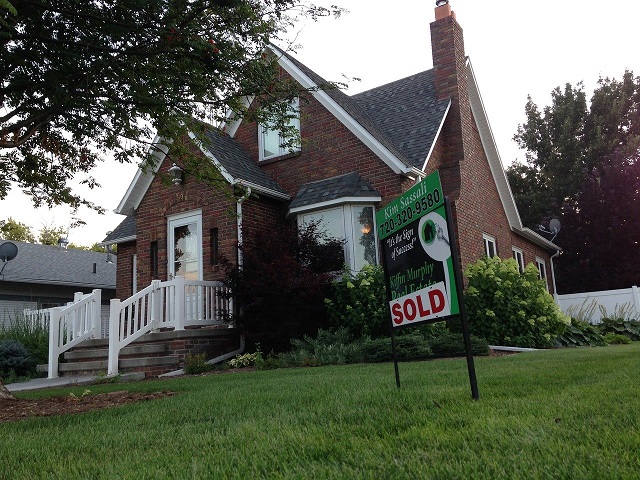
Summer 2021 will be a hot one for the real estate market, says the Home Buying Institute. But is the raging home-buying bull market sustainable? With property values up well over 10% in many areas, some market watchers are asking if housing is a bubble.
In fact, there are several good reasons for optimism ahead. But these days, we’re doing our best to prepare for anything. So, let’s look at the positive signals first. Then, let’s check over the concerns heading into late 2021.
Bullish Sign #1. Buyers Are Getting Good Mortgage Rates.

In March 2019, one year before the pandemic, property values were up and mortgage rates were around 4%. When Covid first appeared in North America, the housing market and just about everything else suddenly paused. Then, the pandemic really took hold. Mortgage rates dropped below 3%. The demand for mortgage loans took off, and the buying continued.
Fortunately for buyers, mortgage rates are expected to stay in the three-point-something range throughout most of 2021. This makes borrowing money for a home very appealing. Many who are now in the position to buy will jump at this opportunity before rates return to their pre-pandemic numbers.
So, the case looks bullish for Summer, but what about later in the year? Some analysts think mortgage rates will go up at the end of 2021.
Bullish Sign #2. High Demand, With a New Set of Buyer Preferences.
As of late Spring 2021, it’s still very much a seller’s market with no signs of slowing down. Adding to this is the change in buyer preferences.
Lives have changed. Today’s buyer is reshaping real estate accordingly, and keeping the market strong.
The hybrid workspace, combining Zooming from home and meetings at a physical office, is a mainstay now. People want homes with specific places for work and for privacy.
Smart home technology and green construction methods are also at the top of many buyers’ minds. So are health-supportive systems such as UV lights and high-tech filtration for heating and air conditioning units. Innovation — in all of these aspects at once — is stimulus for the real estate market.
☛ Selling your house this year? Buyers’ preferences have changed. Appeal to buyers who work at least partly from home. It can boost your listing.
Bullish Sign #3. People Are Feeling Safer.
People are getting out of their homes. Retail, personal services, restaurant and hotel jobs are coming back. As potential home buyers regain their financial footing, they’ll start looking at homes and mortgages.
Urban markets that saw drops in demand, such as New York City, now see resurging interest from bargain-hunting buyers. Additionally, some homeowners who quietly waited out the virus are now having yard sales, having their homes staged, staying in hotels or with friends if that’s the plan, and selling their homes. Summer is always a good season for moving. This summer, we can.
For these reasons, we can expect this summer to be a sizzler for real estate deals. But is the surge sustainable? If not, when can we expect momentum to fade? Let’s look at how the market could be poised for a reversal if the real estate bears are right.
Bearish Sign #1. Interest Rates Are Already Rising.

Financial stimulus, a healthier job market, and the reopening of social and commercial spaces will all lead to inflation and rising interest rates. It could all turn out to be too much for buyers.
As customers and workers return to the retail, leisure and entertainment industries, higher interest rates are inevitable. This is a Catch-22 for hopeful homebuyers. They need roughly $10,000 more to afford a home when interest rates rise from the 2.75% level to 3%. That jump has already occurred.
As rates increase, people hesitate to buy. Based on this trajectory, Kevin Paffrath, a California gubernatorial candidate, can visualize home prices plunging 20% after September or October. Paffrath calls that time an “an inflection point” when we’ll know whether inflation is merely transitory or here to stay.
Bearish Sign #2. Real Estate Is Already Overvalued.
Owners have built up a lot of equity in their homes over the recent few years. Today’s surging home prices are making many owners house-rich, able to tap into that equity value if they find themselves facing uncertain financial times.
Meanwhile, those who hope to buy face bidding wars. The struggle is real. Market research from Realtor.com indicates that the number of homes for sale has halved in the past year. It will take some time for the supply to rise from this point.
Now, factor in an additional challenge: the surging price of lumber, copper, gypsum and steel. Builders are constructing foundations without finishing the houses, waiting and hoping for commodity prices to drop. Rising lumber costs alone have added a whopping $36,000 to the price of building a house.
High housing prices, low inventories, and prohibitive material costs are leading some analysts to think the bullish housing market is overheated, overvalued, and unsustainable.
Bearish Sign #3. Market Sentiment Is Down.
The drawn-out seller’s market is a concern for many potential buyers. Some struggling homeowners will sell and move into rental homes while it’s still a seller’s market and they can salvage their equity. This is why residential rental real estate stocks are still enjoying the upsurge that we noted last year.
Meanwhile, fewer than half of respondents to Fannie Mae’s new buying and selling sentiment survey think it’s a good idea to buy a home. Month over month, from April to May 2021, the percentage who feel optimistic about buying fell from 53% to 47%, while the group who think this is the wrong time to buy went up from 40% to 48%. Fannie Mae says the sentiment related to home buying has “turned net negative for the first time in the survey’s history.”
Sellers, too are concerned, if their selling plans mean they’ll also be buyers. Judging from Fannie Mae’s survey results, many people might want to be sellers, but could be holding off until they believe they can purchase a suitable house in the necessary price range.
Count on Home Buyers’ Changing Expectations. Beyond That… Let’s See.
Although no one has a crystal ball, and Deeds.com makes no assertions about the near-term or long-term housing market, we can make out a few things from surveys, sentiment, and price trends.
Summer 2021 should see a lot of activity — partly motivated by new trends, and partly by concerns that the current bull market in real estate could lose steam. And, alas, we need to be realistic about one more factor. With under half the U.S. populace immunized so far, and variant viruses growing in several states, we have yet to reach closure on Covid-19.
The takeaway so far? Whether you’re a bull or a bear, it’s best to keep abreast of changed conditions, try to keep a cash reserve, and plan for a range of outcomes in late 2021 and beyond.
Supporting References
Ilyce Glink and Samuel J. Tamkin in the Washington Post: 2021 Will Be Another Good Year for Home Sellers — Not So Much, Though, for Buyers (Jan. 20, 2021).
Brandon Cornett for the Home Buying Institute (HBI): U.S. Housing Market Will Be Hot in Summer 2021(Mar. 14, 2021).
Diana Olick for CNBC: The Housing Market Stands at a Tipping Point After a Stunningly Successful Year During the Pandemic (Mar. 12, 2021).
Diana Olick for CNBC: Home Construction Sees Biggest Drop Since Pandemic Hit. Here’s Why (May 18, 2021).
Fannie Mae Press Release: HPSI Dips as Consumers’ Pessimism Toward Homebuying Conditions Sets Survey Record; Gap Between Homebuying and Home-Selling Sentiment Continues to Widen (May 7, 2021).
Kevin Paffrath (Meet Kevin for Governor) on YouTube: Timing for the Next Housing Market Crash (May 22, 2021).
Carl Zimmer and Apoorva Mandavilli for the New York Times: How the United States Beat the Variants, for Now (May 14, 2021).
Photo credits: tkoch, via Pixabay; Hans Eiskonen, via Unsplash; and Janko Ferlic, via Pexels.
